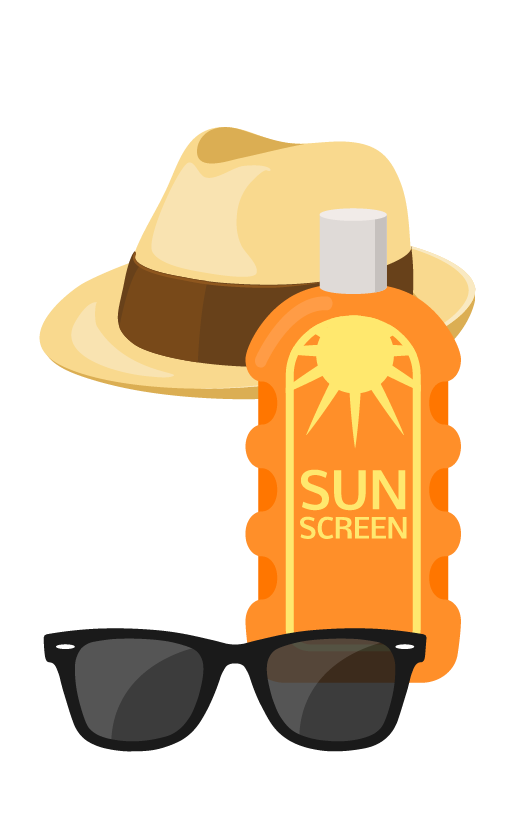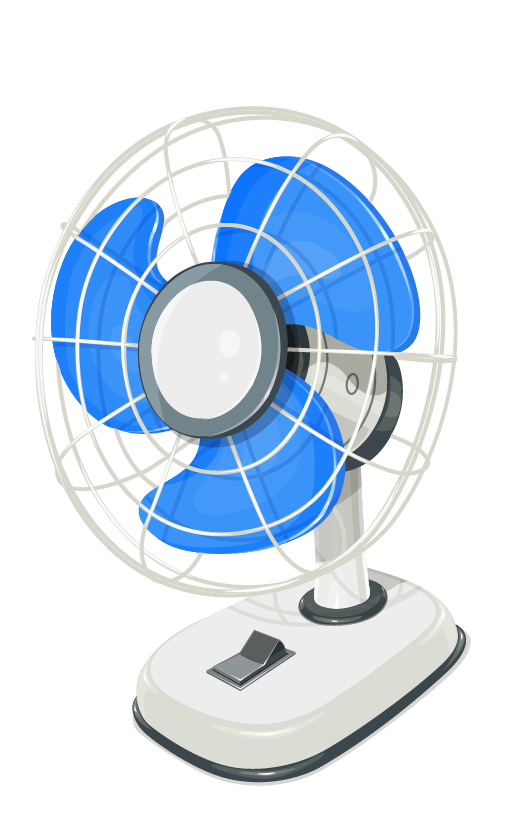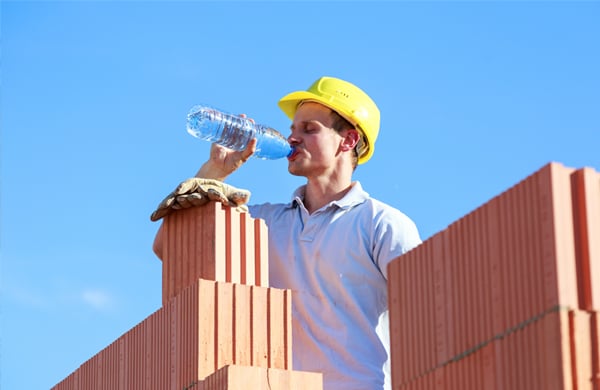
By
Rob Boyle
October 10, 2024
Updated
October 10, 2024

How do I manage working in the heat?
During summer seasons and times of intense heat, workers can be at serious risk of illness, over-exhaustion and potentially even death.
As hot temperatures soar, employees who work outdoors are especially susceptible to heat-related illnesses.
Similarly, workers in indoor environments that require high temperatures can also fall victim to excess heat exposure. Industrial workers both inside and outdoors are likely at risk of heat illness at some point during their normal workdays. Workers should be made aware that heavily used machinery and furnaces give off a lot of heat. Employers should take steps to ensure all safety precautions are followed and necessary heat prevention programs are in place on work sites.
What should I do if I have to work outside in the heat?
High temperatures can raise the body's core temperature considerably without workers even knowing, and if employees aren't aware of their internal conditions, then employers won't be either. By noticing the warning signs and being aware of just how damaging heat can be to safety and productivity, employees can be protected from harsh working conditions.
Many of the negative effects of heat can be mitigated by delegating tasks appropriately and providing adequate on-site resources. Workers should be permitted to take multiple extended breaks when temperatures are higher. Similarly ensuring the availability of food and water is a must.
Below are some tips for workers and employers to consider for work sites and jobs during the summer to help avoid and prevent heat-related illnesses:

Drink plenty of fluids. Before activity starts, drink up to 16 ounces of fluid. Then drink eight (8) ounces every 20 minutes during the activity. Work sites should always have water facilities near every worker. Water and sports drinks are two excellent choices. Stay away from sugary sodas and energy drinks, which can speed up the dehydration process.
 Protect your skin. Wear sun block and a protective hat if you are going to be directly in the sun. The sun can be very damaging to your skin if it is left unprotected. The higher the SPF, the more protection offered. Long-term exposure to damaging UV rays can potentially lead to skin cancer and other serious illness. Using bug spray will also help avoid insect bites.
Protect your skin. Wear sun block and a protective hat if you are going to be directly in the sun. The sun can be very damaging to your skin if it is left unprotected. The higher the SPF, the more protection offered. Long-term exposure to damaging UV rays can potentially lead to skin cancer and other serious illness. Using bug spray will also help avoid insect bites.
Always dress appropriately. While short sleeved shirts and shorts are great when it’s hot, they don’t protect against the sun and often don’t meet site PPE minimum requirements. Wear clothes that breathe. Nothing should be too tight that it won’t allow fresh air to flow over your skin and help you stay cool. Modern UV resistant fabrics are fantastic at keeping out the sun and keeping the body cool.
Cooling devices and PPE should be mandated on high-risk jobs. Wear your PPE no matter what the temperature. It can’t protect you if it’s not on you. If it’s uncomfortable, take frequent breaks. Sunglasses will help protect your eyes from harmful UV rays, and hats are great at preventing sunburn and keeping your body slightly cooler.

Acclimate to the heat. Do this slowly over five to seven days of exposure. Companies should have appropriate work cycles and workloads should be spread evenly across crews. Establish a schedule for work and rest periods during hot days. Everyone is different when it comes to heat, and humans vary from individual to individual when it comes to their tolerance to heat.
In addition, workers who at one time may have been used to such conditions can become gravely affected by heat if they are away from the job for a week or so. Workers coming back from vacation need time to readjust their bodies to such extreme temperatures. Likewise, new employees may be at the highest risk of heat-related illness simply because they are not acclimated to such conditions.

Take a break. It is important to allow your body a chance to recover from the heat. Take a break and go indoors or into an air-conditioned car.
Employees should have access to air-conditioned rooms, even when outdoors or suspended in the air. Local ventilation points should be present in high moisture areas.
The sun is at its highest point in the sky and at its hottest from 10:00 AM till 2:00 PM. If it is at all possible to avoid outdoor work during these hours, it will greatly reduce your risk of a heat related injury or illness.
Pay attention to symptoms. Learn to recognize the symptoms of heat stress. Pace the work, taking adequate rest periods (in shade or cooler environment). If you begin to feel dizzy, weak, or nauseous, please take a break immediately. If your symptoms do not go away after getting out of the heat, you should call for medical attention.What is heat stress, and what are the signs of heat-related illness?
First, it is important to know the types of heat-related illnesses and the varying symptoms in order to take first aid measures should you or a worker shows signs.
Types of Heat Illness
- Heatstroke - A life-threatening illness in which body temperature may rise above 106°F (41°C) in minutes; symptoms include dry skin, rapid strong pulse, and dizziness.
- Heat exhaustion - An illness that can precede heatstroke; symptoms include heavy sweating, rapid breathing, and a fast weak pulse.
- Heat cramps - Muscle pains or spasms that happen during heavy exercise
- Heat rash - Skin irritation from excessive sweating

What should I do if I experience symptoms?
If heat stress symptoms occur, take the following steps:
- Stop physical activity and relax in a cool place
- Drink plenty of fluids rich in salts and electrolytes to replace moisture loss through sweating
- Use cool compresses to decrease temperature
- In the event of a suspected heatstroke, call 911
Read our Safety Moment on Heat-related Illnesses and First Aid by clicking here.
